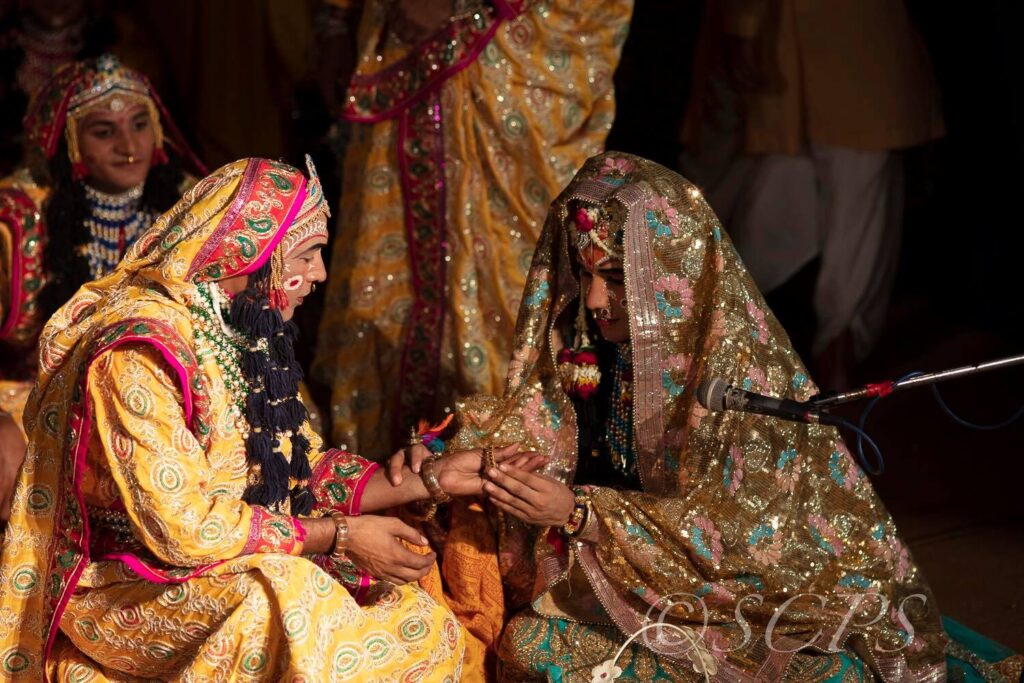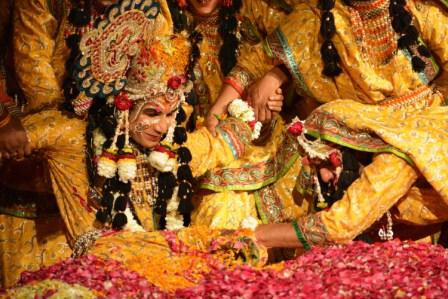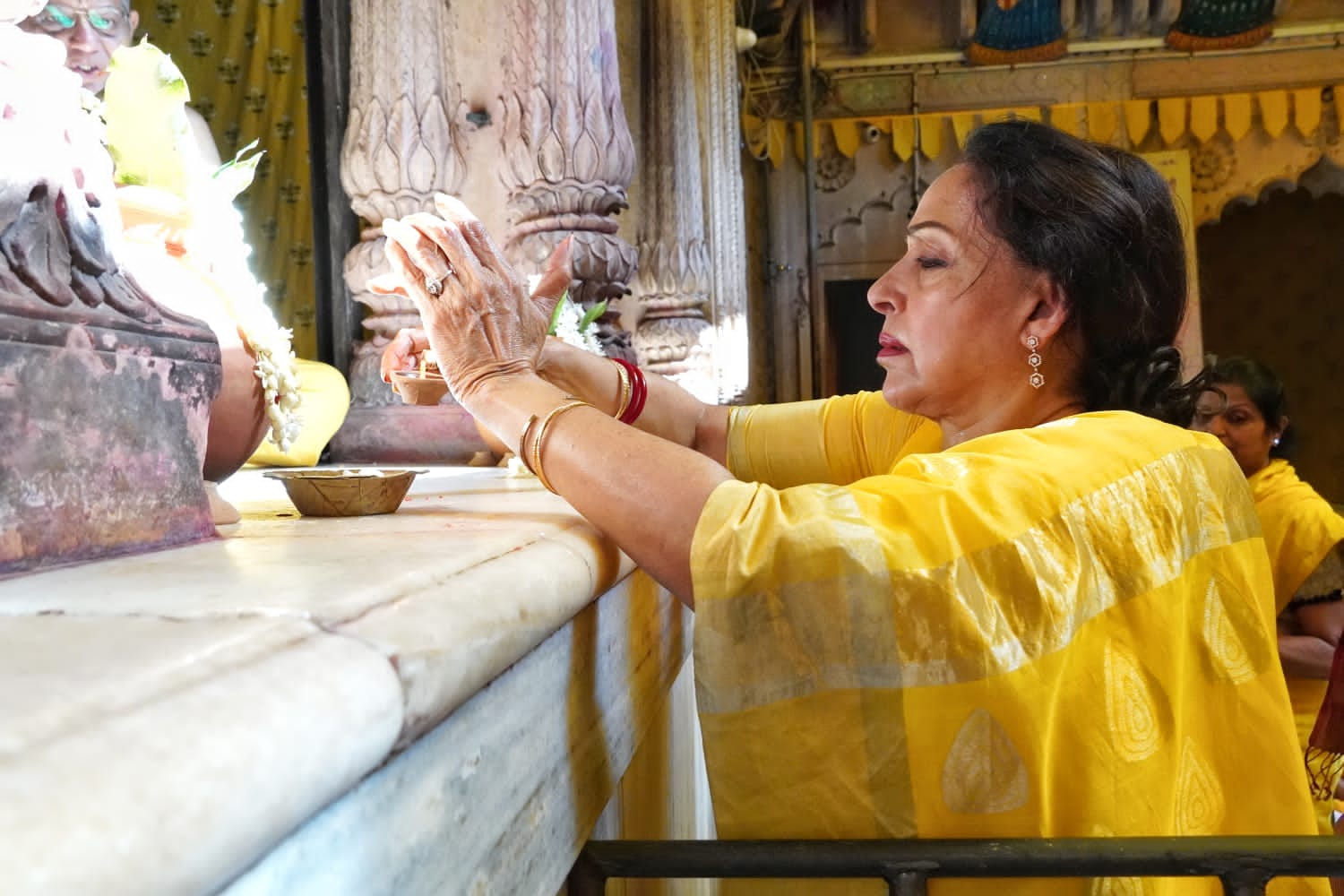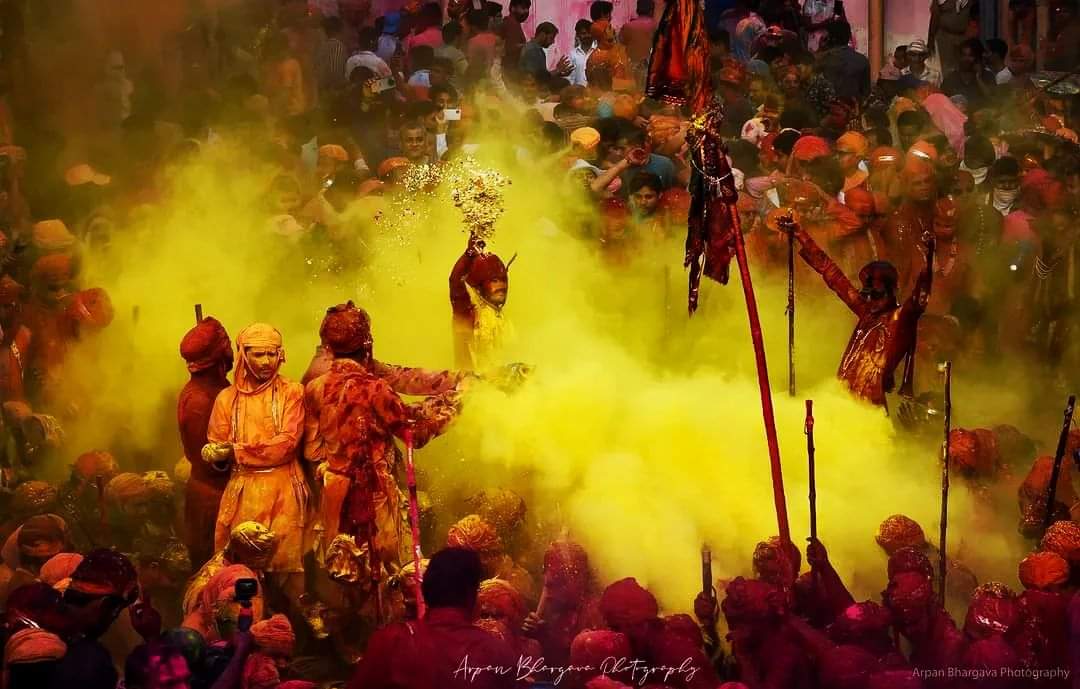- By Kapil Dev Upadhyaya
2022.07.16 (Vrindavan Today News): इत्युन्मत्तवचो गोप्यः कृष्णान्वेषण कातराः। लीला भगवतस्तास्ता ध्यनुचक्रुस्तदात्मिकाः।। (श्री म. भा. दशम स्कन्ध, त्रिशोध्याय-14)
O Parikshit, anguished thus by Krishna’s sudden disappearance from the Raaslila, the bewildered Gopis searched for Him in all directions, asking the trees, creepers, birds and cows for His whereabouts. The painful pursuit drove them into a state of delirium, entering which they became ‘Krishnamayi’. Thinking of themselves as Krishna, they began imitating His lilas.
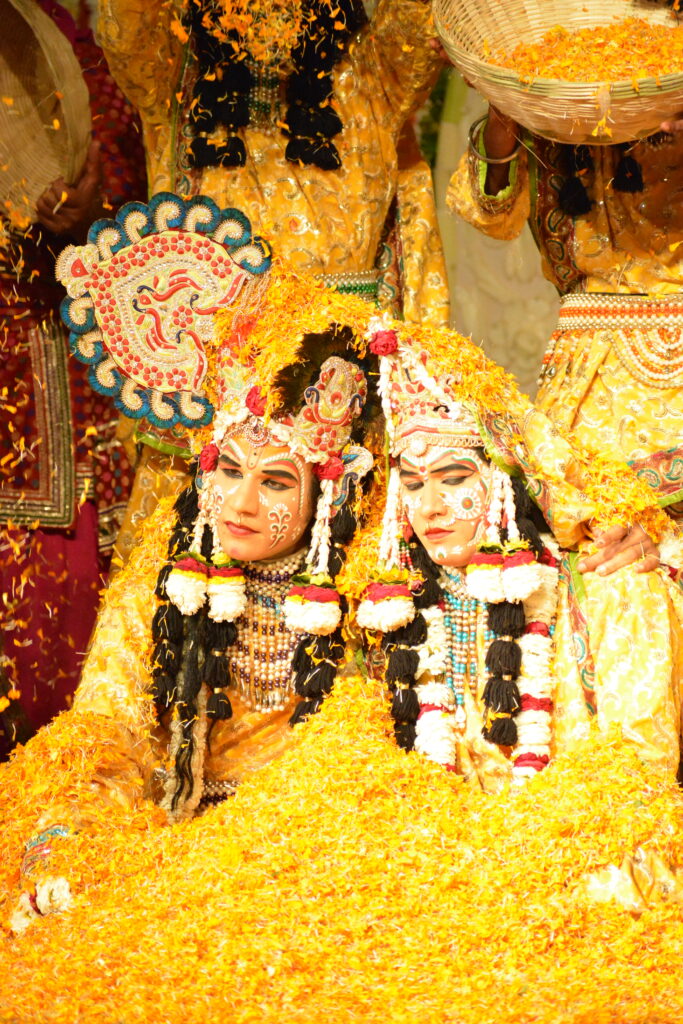
‘Raso Vai Sah’; The shrutis (scriptures) state that the supreme is ‘Rasa’, whether as the formless absolute or in the supreme form as Shri Krishna. ‘Rasa’ is that indescribable emotion which is felt when one becomes ‘Rasa’ itself. Because knowing ‘that’ is becoming ‘that’, Goswami Tulsidas also says, ‘सोई जानहुँ जेहि देऊ जनाई, जानत तुमहिं तुमहिं होइ जाई।’ – One who knows Ram, becomes Ram. ‘Rasa’ is therefore our true nature as bliss knowing itself. It is indeed an ineffable state of ecstasy, awareness and consciousness which is unattainable without the complete dissolution of the ego, just as the Gopis became Krishna by constantly meditating on him in the mood of conjugal love. Only a divine awareness remained to relish itself.
मंडलेन च स्त्रीणां, नृत्यं हल्लीसकं सुतत्। नेता तत्रमवदेको, गोपी स्त्रीणां यथा हरिः।।
The scriptures accept Shri Krishna as the origin of ‘Rasa’, but to experience this state He had to double up as the Gopis, chief among whom is Radha. The Gopis thus effectively became the ‘first acharyas of Raas’. As the ‘aaradhya’ or the object of Krishna’s worship and His numinous desire, they directed the ‘Maharaas’, embellishing it with all the myriad ‘bhavas’ and ‘mahabhavas’ – the highest expression of ecstatic love experienced by none but Radha. This was possible only with intense meditation on Krishna. So as to facilitate the attainment of this contemplative state, He disappeared from the midst of the Gopis who had entered a mood of divine arrogance, perhaps deliberately, while enjoying and being enjoyed by Him during the ‘Raaslila’.
Realising Krishna had gone, the Gopis, bereft of all pride, began to lament and look for him. Their delirium grew to a point where they started asking all things, animate and inanimate, of His whereabouts. The rapture reached its crescendo when the Gopis, pained by intense love, longing and ‘viraha’ (separation), lost all sense of individuality and became Krishna. Some went after the butter pot, others chased the demons away. Elsewhere they balanced their unfurled ‘odhanis’ in the air to symbolise Krishna’s lifting of Govardhan. Kaliya was subdued once again as the delicate Vrajanganas imitated the lilas of their dark lord.
ASHTASAKHI’S ROLE IN RASALILA
While Radha is chief among the Gopis, her sakhis, eight of them, play an important part in the ‘Raaslila’. Beginning with setting up the pretext for the meeting of priya-priyatam, they arrange for every other element of it, such as the venue and ambience, raag, bhog, shringaar, and the play itself. Each of the ashtasakhis is adorned with specific features, qualities and responsibilities, as described below.
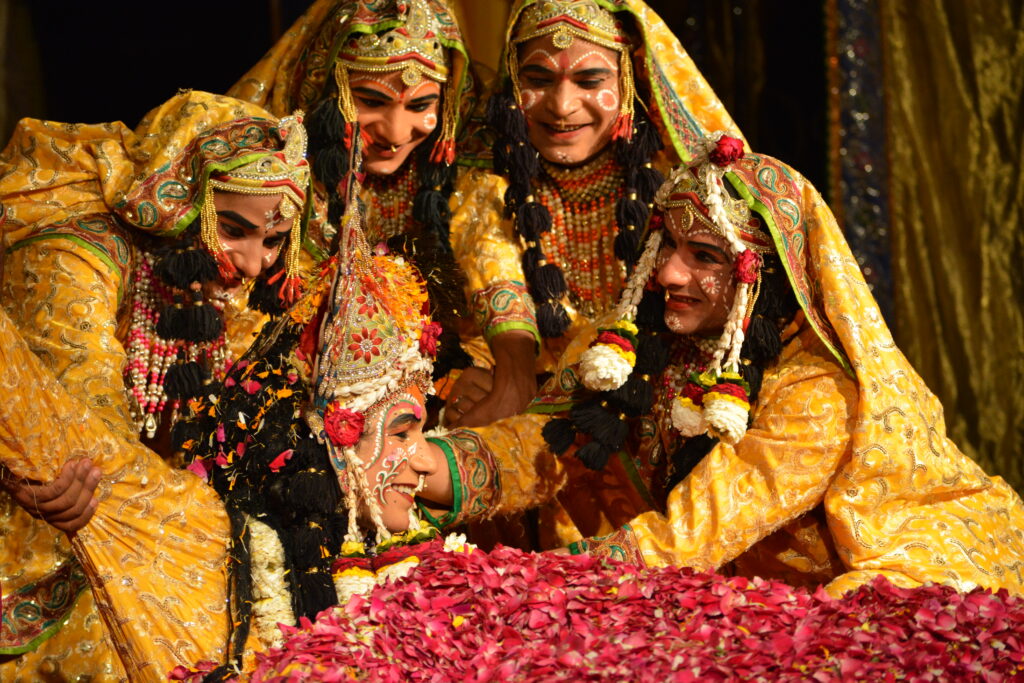
Lalita Sakhi: She is the most clever of Radha’s ashtasakhis, and also the most easily irked. Her angry disposition belies her sweetly radiant form of a fourteen-year-old (fourteen years, eight months and twenty-seven days precisely), embellished with yellow drapes. Lalita is the daughter of Sarada Devi and Vishoka, and the wife of Bhairava. ‘Unchagaon’ is her home. Ever residing by Radha’s side, she is an expert in organising various playful activities for the beloveds such as ‘nauka vihar’, ‘jhulan lila’ and others.
Vishakha Sakhi: Being an expert storyteller, the golden-hued Vishakha is assigned the role of Radha and Krishna’s messenger. One of her other sevas include applying scented ointments to the divine forms of priya-priyatam. She is the daughter of Paaval and Daakshina, and the wife of Vaahika. Her home is in Kamai village. Vishaka is fourteen years, two months and fifteen days old.
Champaklata: The third sakhi Champaklata is known for her argumentative yet emotional nature. Fresh like a flower blooming in the rainy season, she is skilled in the art of cooking for priya-piyatam, and hence Their rasoi seva is entrusted to her. She hails from Karhela. Champaklata is the daughter of Arma and Vatika, and the wife of Kaidaksh. Her age is fourteen years, two months and three days.
Chitrasakhi: Adored by all for her gentle nature, Chitrasakhi is also an adept at cooking, though she is particularly known for her skill of preparing various kinds of ambrosial drinks for the divine couple. She belongs to the village Chiksoli. Chitrasakhi is the daughter of Katura and Karnika, and the wife of Peethra. She is fourteen years, seven months and fourteen days of age.
Tungvidya: She is the famed musician, singer, and veena-player of the ashtasakhi mandal, who also dances for the pleasure of priya-priyatam. Tungvidya was born in Damro (Damala), as the daughter of Purudhar and Megha. Her husband’s name is Valesha. She is fourteen years, two months and twenty-two days of age.
Indulekha: Indulekha sakhi is an expert palmist and fortune-teller. Her resourceful nature sets her apart from the rest. She is known to figure a way out of every tricky situation. Indulekha belongs to Agnonkh village. She is the daughter of Saagar and Bela and the wife of Durbala. Her age is fourteen years, two months and ten days.
Rang Devi: This fourteen years, two months and four days old tender beauty is adept at applying collyrium in Radha’s eyes and adorning Her with various kinds of shringaar comprising precious jewels, ornaments, garments, and flowers for the ‘Raas’.
Sudevi: She is the youngest of the ashtasakhis hailing from Bajreha village. Sudevi is the daughter of Rangasara and Karuna. Forever engaged in lovingly braiding Radha’s hair and serving Her lotus feet, she offers sweet drinks to priya-priyatam while they are engaged in Their love play.
Having described their features and skills, it is redundant to say that the ashtasakhis play a vital role in the ‘Raaslila’. Their transcendental skills and loving devotional services bring forth and accentuate the ‘rasa’ in the ‘Raaslila’.
